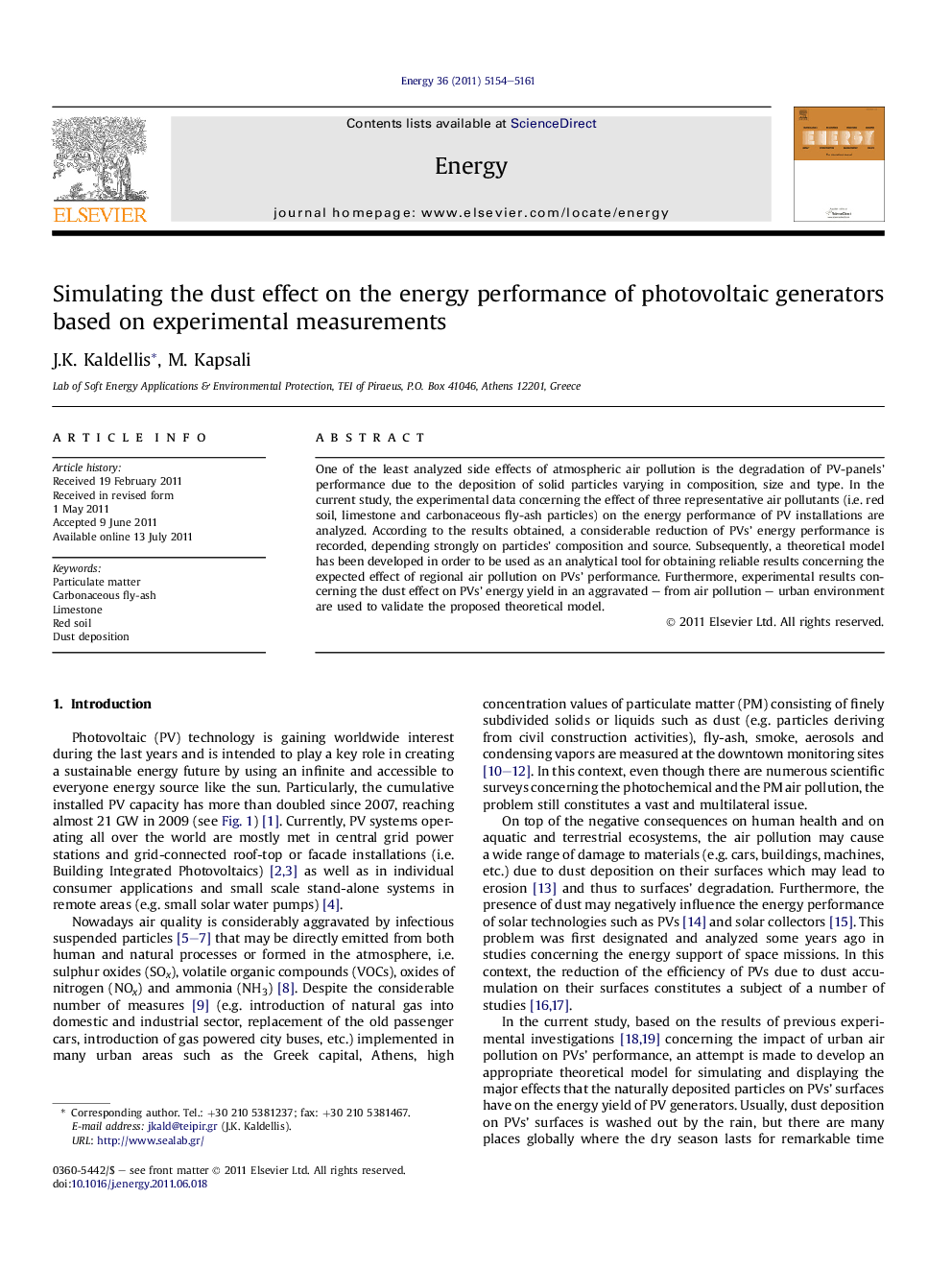| Article ID | Journal | Published Year | Pages | File Type |
|---|---|---|---|---|
| 1734279 | Energy | 2011 | 8 Pages |
One of the least analyzed side effects of atmospheric air pollution is the degradation of PV-panels’ performance due to the deposition of solid particles varying in composition, size and type. In the current study, the experimental data concerning the effect of three representative air pollutants (i.e. red soil, limestone and carbonaceous fly-ash particles) on the energy performance of PV installations are analyzed. According to the results obtained, a considerable reduction of PVs’ energy performance is recorded, depending strongly on particles’ composition and source. Subsequently, a theoretical model has been developed in order to be used as an analytical tool for obtaining reliable results concerning the expected effect of regional air pollution on PVs’ performance. Furthermore, experimental results concerning the dust effect on PVs’ energy yield in an aggravated – from air pollution – urban environment are used to validate the proposed theoretical model.
► The effect of dust deposition on PVs energy efficiency is experimentally examined. ► Based on the results, a considerable reduction of PVs energy performance is recorded. ► The effect strongly depends on the dust composition and on the type of the pollutant. ► A theoretical model is developed for predicting the dust deposition effect on PVs energy yield. ► The model is validated on the basis of experiments conducted in urban environment.
